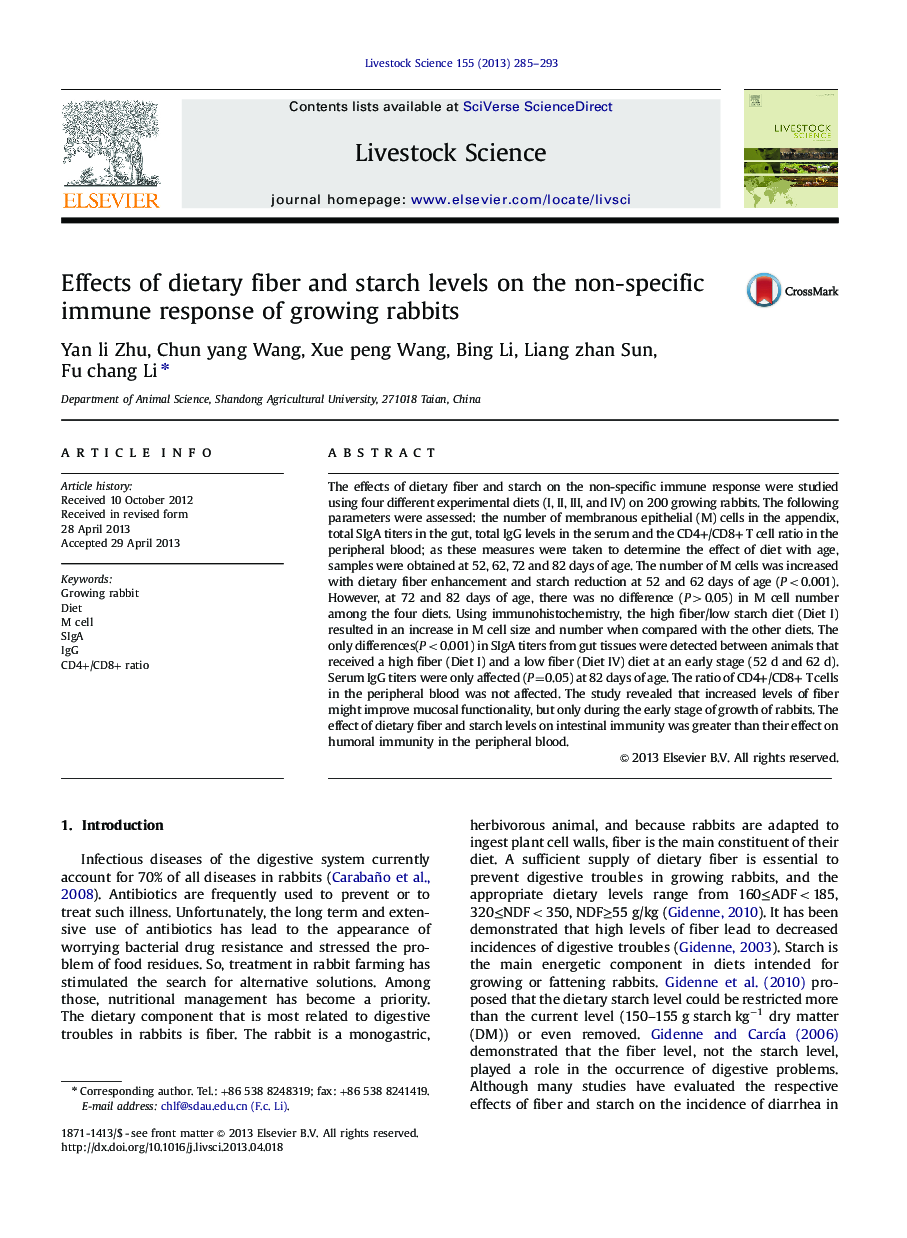| Article ID | Journal | Published Year | Pages | File Type |
|---|---|---|---|---|
| 5790263 | Livestock Science | 2013 | 9 Pages |
Abstract
The effects of dietary fiber and starch on the non-specific immune response were studied using four different experimental diets (I, II, III, and IV) on 200 growing rabbits. The following parameters were assessed: the number of membranous epithelial (M) cells in the appendix, total SIgA titers in the gut, total IgG levels in the serum and the CD4+/CD8+ T cell ratio in the peripheral blood; as these measures were taken to determine the effect of diet with age, samples were obtained at 52, 62, 72 and 82 days of age. The number of M cells was increased with dietary fiber enhancement and starch reduction at 52 and 62 days of age (P<0.001). However, at 72 and 82 days of age, there was no difference (P>0.05) in M cell number among the four diets. Using immunohistochemistry, the high fiber/low starch diet (Diet I) resulted in an increase in M cell size and number when compared with the other diets. The only differences(P<0.001) in SIgA titers from gut tissues were detected between animals that received a high fiber (Diet I) and a low fiber (Diet IV) diet at an early stage (52 d and 62 d). Serum IgG titers were only affected (P=0.05) at 82 days of age. The ratio of CD4+/CD8+ T cells in the peripheral blood was not affected. The study revealed that increased levels of fiber might improve mucosal functionality, but only during the early stage of growth of rabbits. The effect of dietary fiber and starch levels on intestinal immunity was greater than their effect on humoral immunity in the peripheral blood.
Related Topics
Life Sciences
Agricultural and Biological Sciences
Animal Science and Zoology
Authors
Yan li Zhu, Chun yang Wang, Xue peng Wang, Bing Li, Liang zhan Sun, Fu chang Li,
